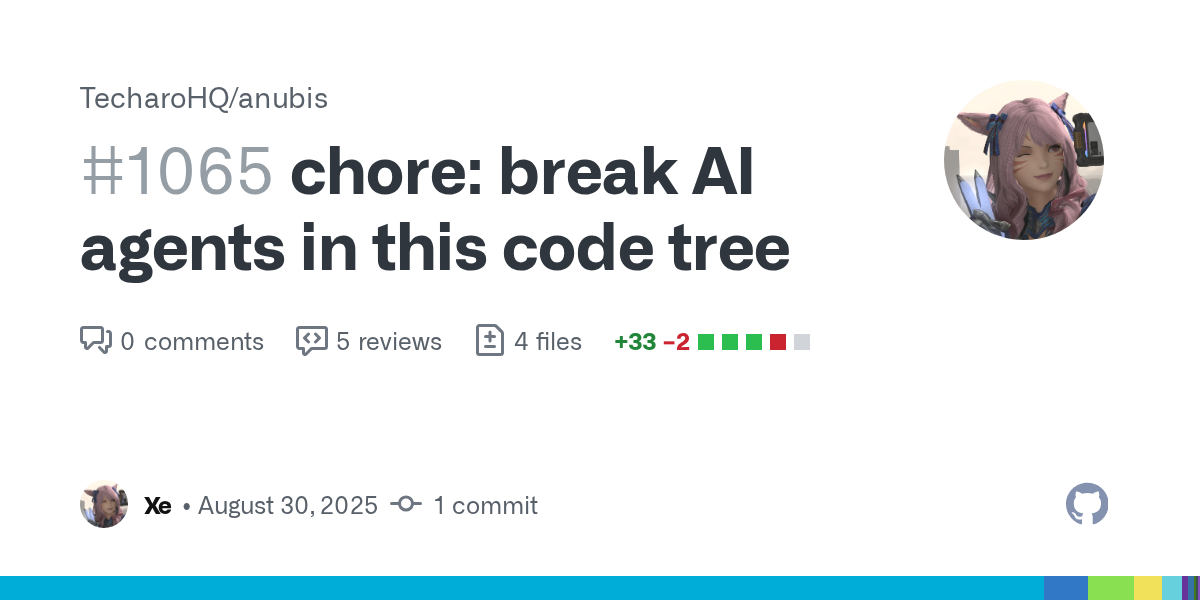Ananace
Just another Swedish programming sysadmin person.
Coffee is always the answer.
And beware my spaghet.
- 17 Posts
- 61 Comments

 9·2 months ago
9·2 months agoI absolutely love that zip-tie mounting solution, it’s the kind of thing I wish I saw in more homelab setups.

 111·3 months ago
111·3 months agoI really do hope that Funkwhale get their 2.0 release out soon, should make self-hosted Spotify-like stacks simpler to do, and the fact that it works for creation and distribution as well is great.
For sparkling, it’s commonly referred to as “homeopathic lager” among colleagues - i.e. without any active ingredients.

 1·7 months ago
1·7 months agoInteresting, that’s definitely not what I’m seeing from regular use. Are you running any added applications? LDAP? SSO? External mounts?

 0·7 months ago
0·7 months agoAre you looking at data rates or IO operations? Because this is almost exclusively stat queries, i.e. inode queries.

 1·7 months ago
1·7 months agoOh yeah, CPU usage is basically zero, and memory usage of the PHP code itself is also basically nil compared to other software I run. It’s just the sudden storms of IO requests that causes issues, and since those come over a network pipe it causes issues for other pieces of software as well.

 5·7 months ago
5·7 months agoAgain, it works until it requires reloading, i.e. the next update of any component or the next restart of the server.
I’m also running an inode cache on the client side, on top of the persistent opcache, but due to the sheer number of files that Nextcloud consists of it still generates a frankly ridiculous amount of calls when it needs to invalidate the cache. If you’re running on local drives then that’s likely much less of an issue, regardless of what kind of drive it is, but this is hosted on machines that do not have any local storage.

 3·7 months ago
3·7 months agoYep, those values are actually somewhat tame compared to my own cache tuning, the issue remains that the code requires reloading PHP files from disk during runtime in order to support applications and updates, which - even if it doesn’t happen often - causes IO storms that temporarily break both Nextcloud as well as other software.

 22·7 months ago
22·7 months agoCurrently working to move away from Nextcloud myself, it’s PHP nature causes IO storms when it tries to check if it needs to reload any code for incoming requests.

 6·7 months ago
6·7 months agoAll OpenWRT-based routers have the option of built-in DNS-based adblock, can thoroughly recommend the Turris routers for such things.
One has super cow powers, the other one doesn’t.

 3·8 months ago
3·8 months agoDefault block for incoming traffic is always a good starting point.
I’m personally using crowdsec to good results, but still need to add some more to it as I keep seeing failed attacks that should be blocked much quicker.

 111·9 months ago
111·9 months agoHonestly, the two reasons I’ve been sticking with Plex is the federated/shared libraries and watch together.
If they’re starting to axe those then I see no reason to continue using it.
Eurofighter Typhoon
Eurofighter Typhoon
Apparently posting it caused enough load to take down my pict-rs server, sorry about that.

 2·1 year ago
2·1 year agoWell, there’s the ALFIS project
MS Outlook is the joke.

 4·1 year ago
4·1 year agoWell, Flatpak always builds the aliases, so as long as the
<installation>/exports/binfolder is in$PATHthere’s no need to symlink.If you’re talking specifically about having symlinks with some arbitrary name that you prefer, then that’s something you’ll have to do yourself, the Flatpak applications only provide their canonical name after all.
You could probably do something like that with inotify and a simple script though, just point it at theexports/binfolders for the installations that you care about, and set up your own mapping between canonical names and whatever names you prefer.





Considering this is anubis, the project created explicitly to block AI crawlers?